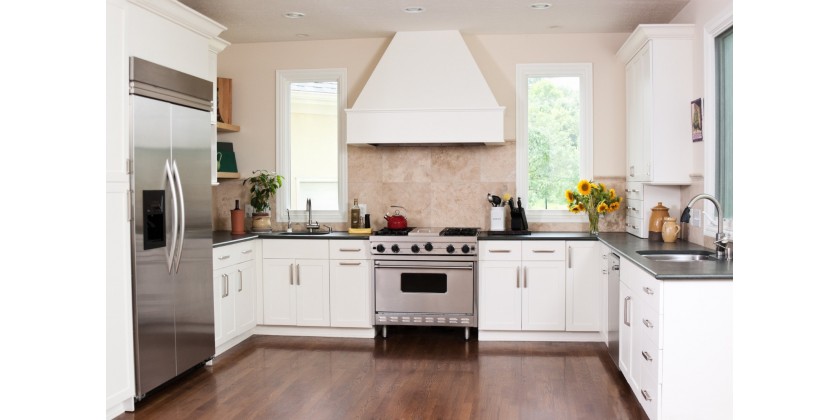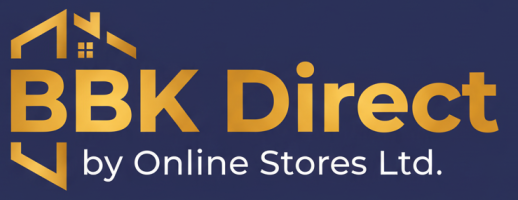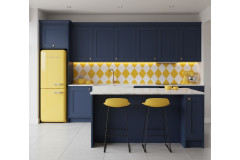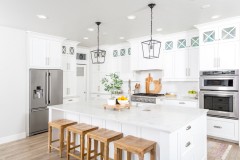
Buying an oven isn't like buying groceries.
You can't go to the store and come back home with one without considering several different factors. You have to think about your hookup, your cooking needs, the style, and your budget. And that doesn't even cover the other features you need.
But don't get overwhelmed.
We've put together this complete guide to help you figure out what oven you need and the six most important features that should go with it.
So keep reading below.
Important Questions to Ask Before Buying an Oven
Buying a new oven in an expensive investment, so you want to make sure you get the design and features you need within the right price range. To do this, you should start the process by asking yourself a few questions.
Spend some time figuring out the answers to the following questions before you head to the store.
What Do You Cook?
What type of food do you cook? How often do you use your current oven?
If you spend a lot of time baking intricate desserts and dishes, you might need a high-end oven. But if you throw frozen food in the oven, you might not need anything so expensive.
Maybe you use your hob more often than your oven. If this is true, you'll want to focus on the hob rather than the oven during your shopping.
What Kind of Hookup Do You Have?
The type of hookup you have will mandate what kind of oven you can buy. An electric hookup won't work with a gas oven.
If you want to buy an oven that doesn't match your hookup, you'll have to spend extra money switching out the hookup first.
What Kind of Appliance Does Your Kitchen Allow?
There's a good chance you'll need to get the same type of oven you already have in the kitchen.
Why?
The design of your kitchen plays a big part in what oven you can have. For example, if your kitchen has a wall oven, you'll have to make some renovations to switch to a freestanding oven.
You might have a built-in hob that's altogether separate from your oven. Figure out what kind of appliances can fit in your kitchen before spending any money.
What's Your Budget?
There's a wide range of prices when it comes to ovens. It's important to set a budget so you don't buy something you can't afford. Extra features like touchscreen controls are tempting, but they'll mess up your financial situation if you aren't careful.
We've broken down the different price points and the different features you can expect with each one below.
£378 - £757: If you don't do a lot of home cooking, an oven in this price range should work for your needs. You can expect basic range cooker functions. You might even be able to find a stainless steel model if you spend enough time looking.
£757- £2,271: An oven that costs 757 pounds to 2,271 pounds is your average range cooker. You can find a lot of models, including stainless steel, with many different functions. But if you want something fancy, this isn't the price range for you.
2,271 -4,542 Pounds: You can find high-quality ovens in this price range. These might include convection fans, dual fuel power options, or slide-in designs.
4,542 Pounds-7,570 Pounds: A serious home cook might need to pay this much for their new oven. These high-quality ovens are almost on par with professional-grade appliances.
An oven in this price range will have complete, stainless steel construction instead of just a finish. It'll also be wider than normal ovens and include six burners and, at times, even more.
7,570 Pounds+: Most people won't need to spend this much money on an oven. But you can customize your oven with built-in features if you can afford it. One of these features might include a water connection that releases steam while you're baking.
Different Power Options Consider
If you're replacing your oven, it's easiest to pick an oven that matches your current power hookup. But getting a kitchen renovation or moving to a new home can present you with new oven opportunities.
So we've put together a list of the most common power options for your oven.
Here's a quick description of each.
Electric Coil
Instead of burners, these hobs have coils. As electricity runs through the coils, it heats up the metal and cooks your food.
But these aren't the best option for most people.
The coils don't distribute even heat, meaning your food will cook at different rates based on its location in the pan. It takes a long time for these coils to warm up and just as long for them to cool down again.
Though the thermostat will tell you if the coil is turned on, it won't let you know if it's still hot when you're done cooking.
Despite these downsides, an electric coil hob is cheaper than many other models.
Electric Smoothtop
As the name suggests, this type of hob is completely smooth. It has heating units under the surface, and a sensor will let you know if the surface is hot.
It's not hard to scratch this type of hob, and you might not be able to use every type of cookware on this smooth top. But it does cook your food well and has better safety measures than an electric coil hob.
Gas Cooktop
A gas hob uses a flame beneath your cookware to heat your food. The heat is uniform, and once you turn off the burner, you don't have to wait for the surface to cool down.
Gas hobs do take longer to boil water than electric ones. So if you want your cooking done fast, you might not want to choose a gas hob.
Plus, gas range cookers come in handy during power outages. You can turn on the gas, light it with a match, and keep cooking like normal.
Induction Cooktop
Induction hobs use electromagnetic energy to heat your food. But the surface won't get warm unless it comes in contact with other magnetic material.
This makes it safer than both gas and electric hobs. Induction hobs also cook your food faster than other hobs.
But there are a few downsides.
You have to buy cookware that is compatible with this type of hob. On top of that, it costs more money than other models.
Electric Oven
An electric oven uses electricity to heat the inside of the oven in a similar way to how it heats the hob. You can either see the heating element at the top or bottom of the oven, but sometimes the heating element is tucked away out of sight.
Electric ovens tend to cook food more evenly than gas ovens.
Gas Oven
These ovens use gas power to heat the inside rather than electricity. They aren't as effective as electric ovens when it comes to even bakes.
Dual Fuel
A dual fuel oven can use both electric and gas power.
For example, an oven might use gas power to heat hob while harnessing electricity to heat the inside of the oven. This can give you the best of both worlds.
Different Oven Styles to Consider
The power source isn't the only thing you have to think about when you're buying a new oven. You also have to consider the style of the oven itself.
Here are the two most common types of ovens you'll come across as you're shopping.
Freestanding
This type of range cooker can fit anywhere inside your kitchen. The hob is part of the oven, and the controls are on a back panel that lifts above the hob.
Slide-In
A slide-in oven doesn't have a back panel like freestanding ovens. Instead, the controls are on the front of the oven. This allows it to match up with the surrounding countertops.
Six Features to Look for in a New Oven
Once you know what style of oven you want and what kind of hookup you have, it's time to get to the fun part: looking at the features.
Not all ovens come with the same functions, so you'll want to pick the features that are most important to your cooking needs. This can change depending on your cooking style, but we've put together six of the most important things to look for when you're buying a new oven.
So take a look below.
1. Convection Heating
Convection heating uses a fan to circulate hot air around inside your oven. Unlike traditional radiant heating, convection saves you time and money on your energy bill.
Because the heating gets distributed in an even way, you don't have to worry about rack placement as much.
2. Temperature Probe
A temperature probe plugs into the side of your oven wall. It can monitor the internal temperature of meat as if cooks in the oven. It then displays this temperature on the control panel.
You don't have to open the door and let all the heat out to check your meat manually.
3. Glass Doors
It's always best to avoid opening your oven doors if you can. Otherwise, the heat escapes and the internal temperature drops. That's why glass doors are so helpful.
You can see the food your baking without opening the door. If you're worried about dirty glass, there are a lot of ways you can keep it clean without too much effort.
4. Sabbath Mode
Sabbath mode is a way to keep your food warm in the oven for a long period of time. It does this without continuing to cook the food, so it doesn't burn.
If you have to prepare dinner in advance or push it back for some reason, this feature is a lifesaver.
5. Timer and Delayed Start
This type of timer makes the entire oven turn off when the timer rings. If you don't hear the timer, your food won't sit in the oven and turn into a blackened crisp.
Delayed start allows you to start the oven after you put the food in. This way, you can prepare the food in advance and wait to cook it until it's closer to meal time.
6. Dual Ovens
Dual ovens have two separate cooking compartments. You can set these compartments to different temperatures without them affecting each other.
This means you can cook two different things at different temperatures at the same time. With a dual oven, your holiday meal preparation becomes a lot easier.
What to Look for in a New Oven
You should never rush into buying a new range cooker. Because they cost a lot of money, make sure you take your time figuring out what features will serve your kitchen best.
Are you getting ready to buy a new oven?
Make sure you take a look at some of the options we provide.












Leave a Reply Cancel Reply
All fields are required